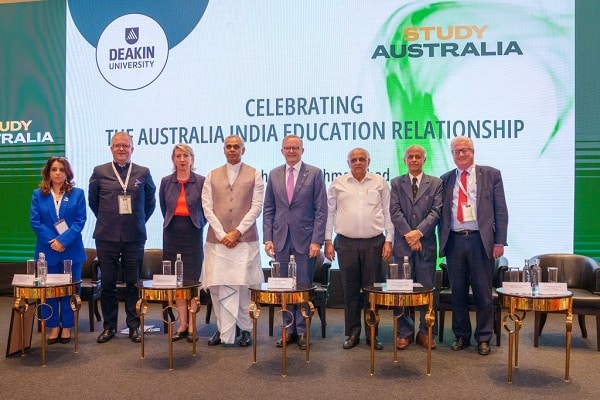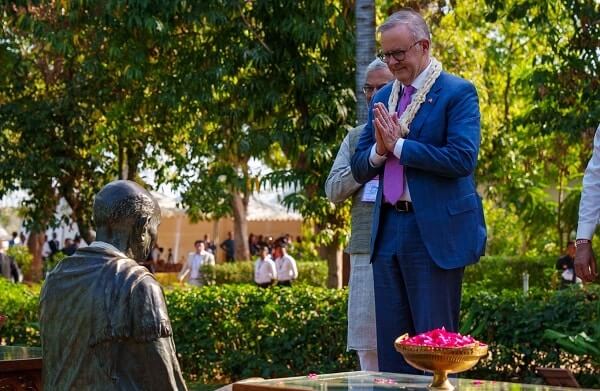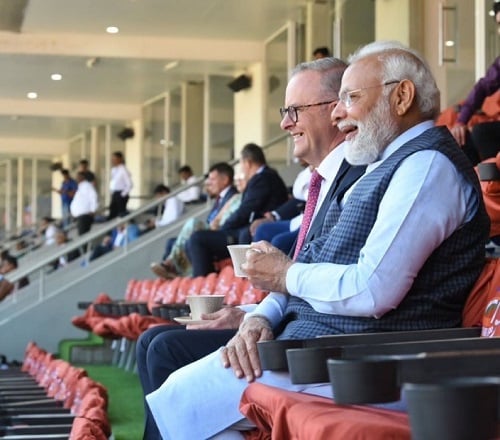If goals are to be set, this one is pretty high.
Australian Prime Minister Anthony Albanese’s recently concluded visit to India is expected to boost trade ties between India and Australia to $100 billion in the next five years, instead of $50 billion as projected after the Economic Cooperation and Trade Agreement (ECTA) came into effect last year.
The two countries are inching towards formalising a Comprehensive Economic Trade Agreement (CETA) by the end of the year. The sectors that would see an uptick in trade would include critical minerals, mobility, education, sports and defence.
In the critical minerals sector, crucial to India, some progress has already been made. India has a huge requirement for lithium, for use in manufacturing batteries in Electric Vehicles. It is hoping that it can increase imports from Australia, which has vast reserves of lithium and cobalt. India is looking at making investments in critical mineral projects to develop supply chains between the two countries.
There have also been significant talks on grid connectivity, allowing surplus power to be shared.
The Economic Cooperation and Trade Agreement has resulted in zero duty on 96 per cent of India’s exports to Australia and 85 per cent of Australia’s exports to India.
Meanwhile, Indians are literally celebrating the fact that there will soon be a campus of Deakin University in India, where they can send their children.

“My daughter is in senior school and hearing the news of Deakin University setting up a campus here have heightened our hopes of her getting an international degree in an India-based campus,” Shakuntala Bahl, a New Delhi-based mum told Indian Link. “This would mean a much lower investment for us as compared to sending her to Australia.’’
University of Wollongong is also on the starting blocks to set up a campus in India and more Australian universities are expected to follow.
India and Australia are also in the process of recognising each others’ educational degrees which would facilitate those looking at working in either country.
The first ever Mechanism for the Mutual Recognition Educational of Qualifications between Australia and India was signed to facilitate mobility of students.
“This new mechanism means if you are an Indian student studying or have studied in Australia, your hard earned degree will be recognised when you return home,’’ PM Albanese said.
Meanwhile, PM Albanese has announced that this year Canberra will host the Malabar Naval Exercise for the first time – which is a joint drill by navies of the Quad nations (India, Australia, US and Japan).
PM Albanese flew out of India straight to the US where he will be meeting US President Joe Biden and British Prime Minister Rishi Sunak in San Diego, to discuss the progress of the AUKUS defence pact under which Canberra is going to buy three to five Virginia-class nuclear powered submarines.
In India the perception of India-Australia ties in the eyes of regular citizens has undergone a substantial change. People are now talking about Australia as a ‘strategic partner’, instead of an education destination for young adults, or a favoured holiday or migration destination.
PM Albanese’s joyful participation in Holi celebrations in Ahmedabad was viewed as his – and indeed Australia’s – openness in embracing Indian culture. His visit to Sabarmati Ashram too went down well and proved to be a good photo op, just like his visits to Gateway of India in Mumbai and Rajgath in Delhi subsequently.

In a first, PM Albanese was the first foreign leader to visit India’s first indigenously manufactured aircraft carrier INS Vikrant. He was given a guard of honour, and his happy posing for pictures from inside the cockpit of a light combat aircraft on board, was widely shared.

The two PMs watched a cricket match in Ahmedabad and in a further display of bonhomie, the selfie they took has gone viral in India. The camaraderie that they both showcased sent signals of a solidifying relationship between the two nations.

Meanwhile, one major area of concern for India, which PM Modi highlighted during the India-Australia summit, was the vandalism of temples across Australia by Khalistani elements. This issue has been a cause of concern for people across India, as well as the diaspora in Australia. PM Albanese’s criticism of this, and his assurance to PM Modi that they were on the same page on hate speeches and vandalism, did sound reassuring.
The two leaders will meet twice more this year, as the two nations celebrate 75 years of diplomatic ties. PM Modi will travel to Australia for Quad in May and PM Albanese will return to India in September for the G20 Summit.
India has been able to position itself well globally due to geo-politics and its rising influence in the Indo Pacific. Visits of global leaders like PM Albanese, and German Chancellor Olaf Scholz prior to that, or the upcoming visit of Japanese PM Fumio Kishida, all show that trade, diplomatic and strategic ties between India and other countries are likely to thrive in the short term. India has become a country that is hard to ignore.
READ ALSO: Strong visuals are but one of the outcomes of PM Albanese’s India visit





